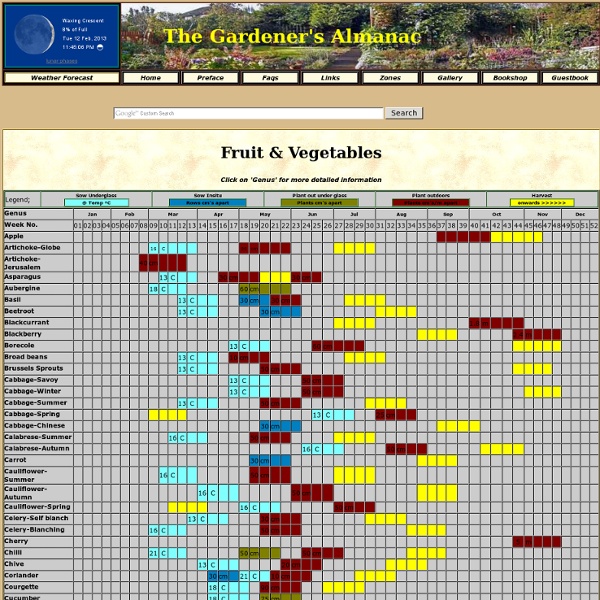



Landscape Design for Mac v17.5 | Punch Software | Official Site Be your own Landscape Designer! Visualize your projects before you start. Punch! Use QuickStart's easy drag and drop rooms to lay out the shape of your home or start with a photo of your house. Tutorials help you get started quickly! What's New for v17.5 Enhanced Floor Management Now with Essentials you can create up to 4 floors. Drag and Drop 3D Objects and Plants Now you can drag and drop 3D objects and plants while using the 3D viewpoint. New Welcome Screen Easily create new projects, access recent projects, sample plans, and training materials. Endless Electrical Switches and Outlets Choose from an extensive library of electrical switches and outlets, fully customizable using paint or other materials. QuickStart Is Even Better Set exact dimensions in inches AND centimeters. And Much More! Drawing editing improvements, add points to curved segments.
When To Plant Vegetable Seeds (2 EXCELLENT Printable Charts) | Knowing when to plant seeds is crucial to successful germination and healthy plants. I don’t know about you, but I am always eager to get sowing seeds indoors this time of year. Trouble is I always sow too many and too soon. These two charts have been created by the lovely folks at Roots Nursery and I don’t need to tell you how useful the charts will be. Garden calendar to keep your kitchen garden growing - vegetables and herbs to sow and plant right now Thy Hand Hath Provided: Spring Vegetable Planting Dates Something happened to our link to this document (Thank you for letting us know!), so I'm re-posting it here. This is a chart that Jamey created and it's what we use to know when to plant. You might not be able to see the entire chart here (depending on your screen size), so please right-click on the image and save it to your computer, then print it out because you'll want to write dates on it. In the instructions, it says to write the dates "above" the 00, etc. That's a typo.